Pelican Rescue: Be Careful with Our Dive Bombing Friends!
Yesterday, as we docked the boat at the back of San Pedro town, I spotted a brown pelican – and something was definitely not right.

I asked the guys on the next dock about him and they said something was stuck in his pouch. He couldn’t eat. He would die.
Wait…WHAT?!?!?!?
But let me back up a bit…
Pelicans are fascinating, bizarre, pre-historic looking goofball birds. Watching them dive bomb/belly flop into the oceans belies what a well-designed fishing machines these guys actually are.
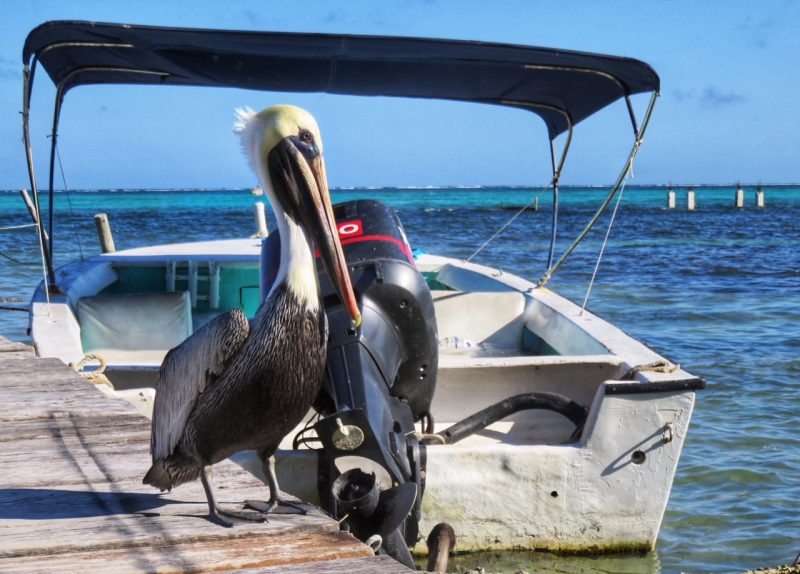
They are one of the birds that you will see the most of when visiting the coast of Belize. We’ve got Brown Pelicans galore (they are endangered in the US but coming back!) – almost grey-brown with a white and yellow head. And once in a blue moon, mainly on the mainland since they are freshwater birds, the American White pelican.
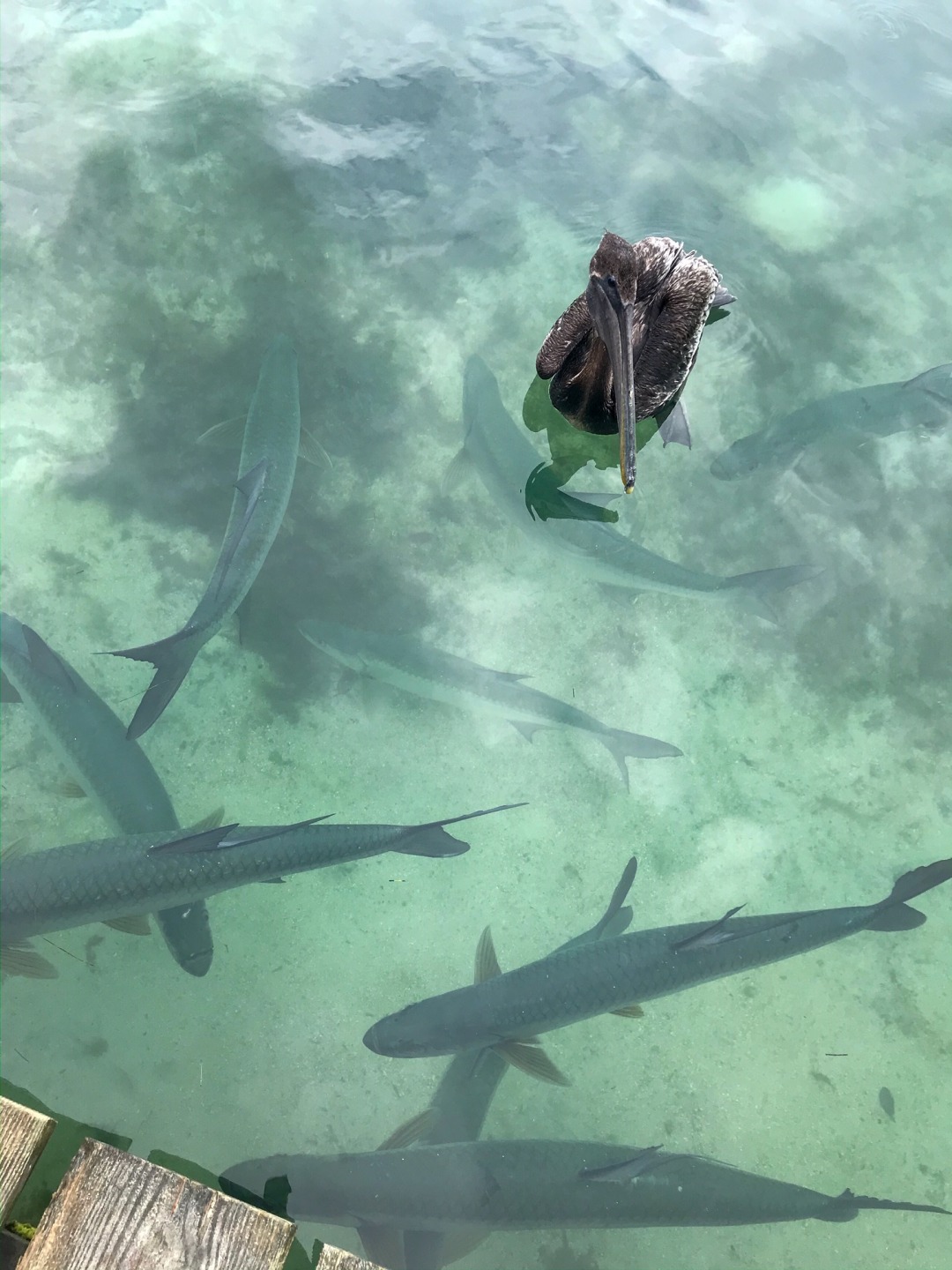 ***Please join my FAVORITE facebook group of all – Belize Birding Network – for beautiful photos and spottings around the country. And zero annoying opinions about politics. Scroll down and you’ll see a sighting of the big white pelicans in the wetlands out
***Please join my FAVORITE facebook group of all – Belize Birding Network – for beautiful photos and spottings around the country. And zero annoying opinions about politics. Scroll down and you’ll see a sighting of the big white pelicans in the wetlands out
Sside of Hopkins.
Here are some intriguing facts about pelicans:
- The prehistoric link is no coincidence – a 30 million year old pelican skull was found in France.
- His name rhymes with Belikin – the beer of Belize – and yet I’ve never seen that mentioned in any of their advertisement!
 Some of you know the little diddy: “A wonderful bird is the pelican,
Some of you know the little diddy: “A wonderful bird is the pelican,
His bill can hold more than his beli-can.
He can take in his beak
Food enough for the week;
But I’m damned if I see how the heli-can.” - You don’t really see baby pelicans around. They are raised in big pelican colonies with nests on the ground – stayed over 2 months with the mother. Fire ants are one of the biggest killers of baby pelicans. Ewww!
- Pelicans live 15 to 25 years!
 Pelicans are photographed, sometimes fed and just loved by all visitors to Ambergris Caye. But we need to be CAREFUL!
Pelicans are photographed, sometimes fed and just loved by all visitors to Ambergris Caye. But we need to be CAREFUL!
Now back to MY pelican. His beak looked wonky and I wanted to get a bit of a closer look before I alerted my friends at ACES – the wild animal rescue heroes we are so lucky to have on Ambergris Caye.

(While their name (American Crocodiles Education Sanctuary) and focus is on protection and education around our island’s crocodiles, they are so willing to help with all wild animals in danger. From a boa to a iguana to birds. Recently, they have been rescuing a few pelicans in distress. Three with badly broken wings.)
My guy had a different issue. I sent the photos to Chris and Christina and left to take my dog to the Vet. We had a 1pm appointment.
They messaged back within 10 minutes and were on their way with the boat! He would have to be approached by water since his instinct would be to jump in the water.
They got him with the specialized bird net and removed this.

And while that may seem like standard pelican food – it is WAY too big for this guy to swallow. And swallow is what pelicans do. There are no teeth!
Here’s the information from Christina, the expert: But I just wanted to add, the issue isn’t so much the size of the fish, but the fact that is filleted and not whole. A filleted fish lacks the smooth skin that allows pelicans to swallow their food. The protruding bones get caught in or slice through their gular pouch, can pierce through their throat and crop, and can even penetrate their air sacs, which extend up the length of the neck.
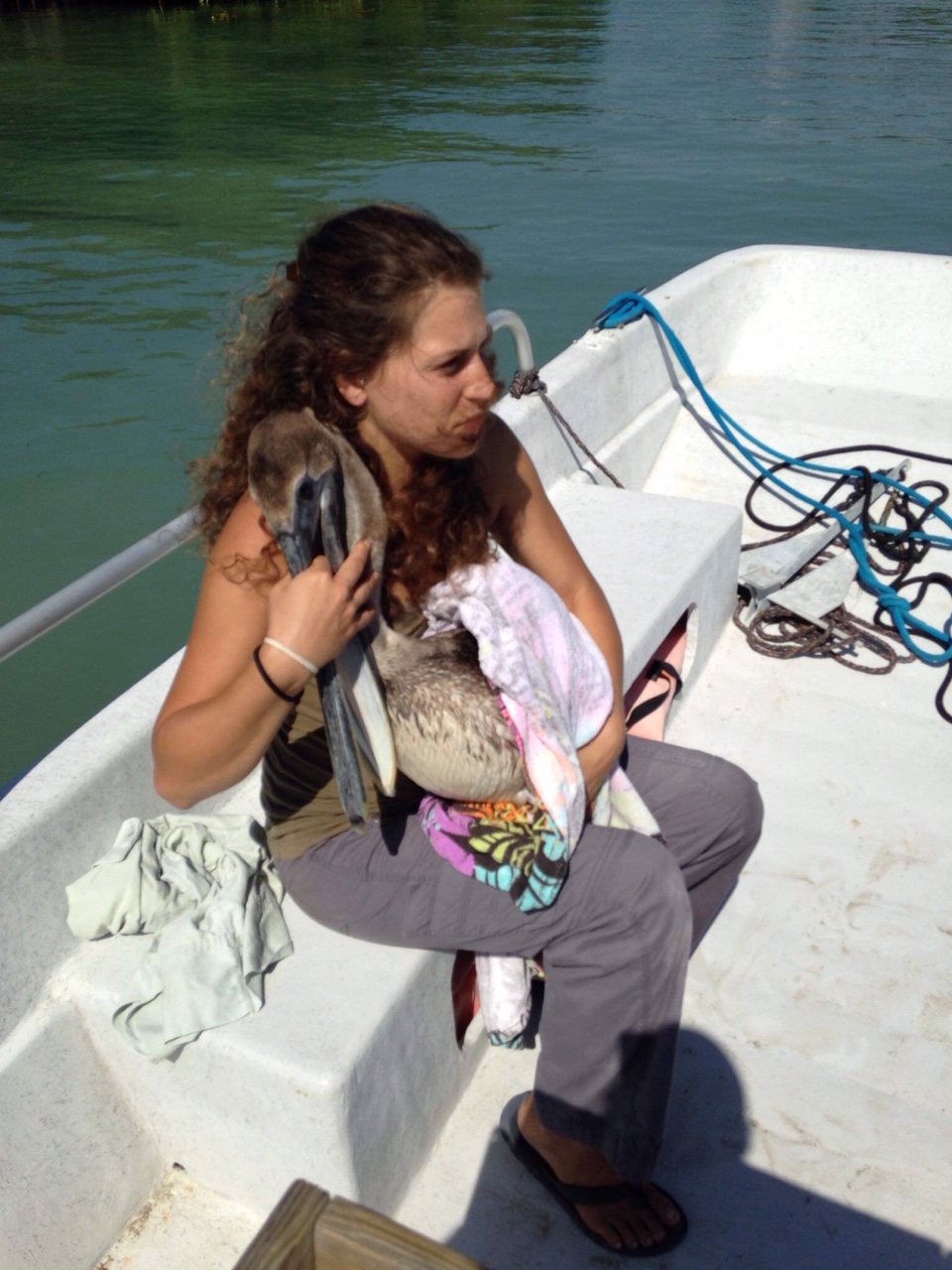
So while it is COMMON knowledge that we should NOT feed crocodiles. Because it makes them sick. Because it makes them associate humans with food. Because it attracts them to populated areas…
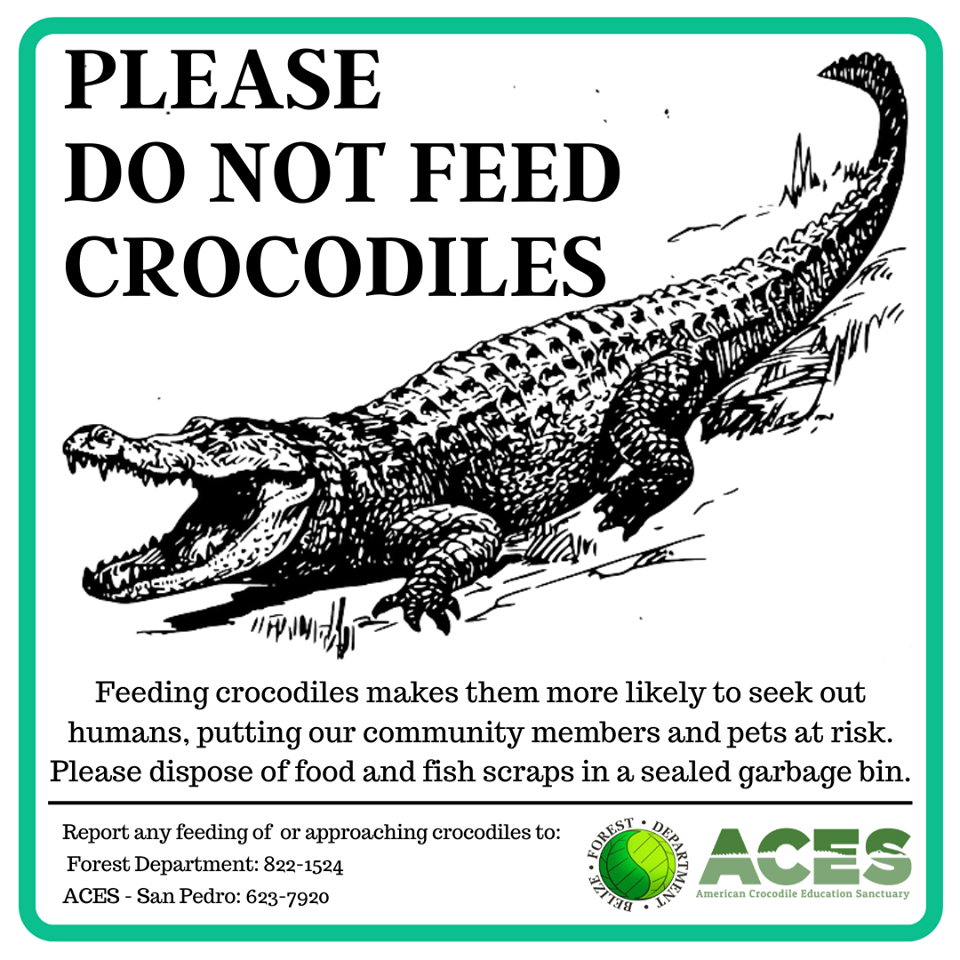
We should ALWAYS be disposing of food and fish scraps properly. And not feeding wild animals. Or leaving it around to attract flies and who knows what else.
This sign that hung at Estel’s – an old island sign – is starting to make sense to me.
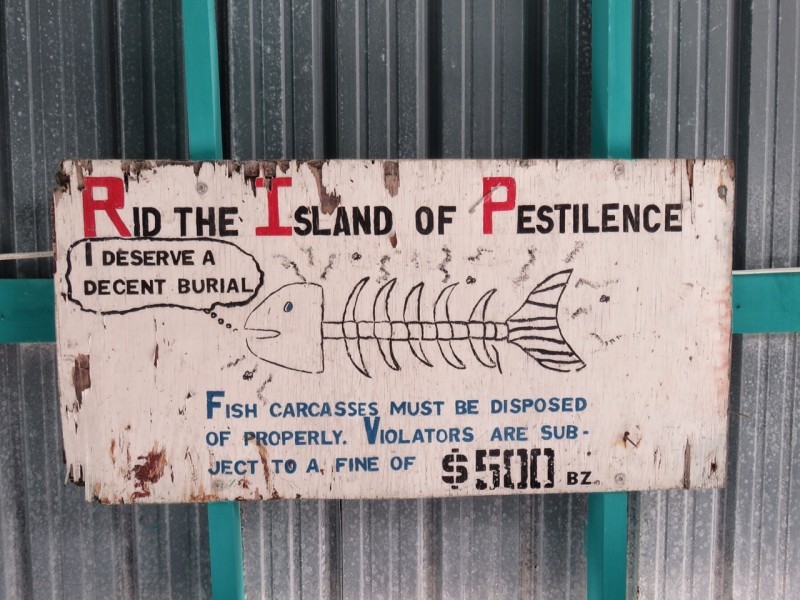
NOTHING GOOD comes from improper disposal of fish carcasses.
And trust me when I saw it – only the worst kind of asshole purposely hurts pelicans or any animals. Cowards.
Now you know.
This brown pelican is on his way to the mainland via water taxi and the equally amazing Nikki and her Belize Bird Rescue. (Read about my visit in: If You Love Parrots, Set Them Free)
He sustained some injuries – possibly to his vocal cords, definitely to the side of his pouch. Hopefully, he has a full recovery. Handsome kid.
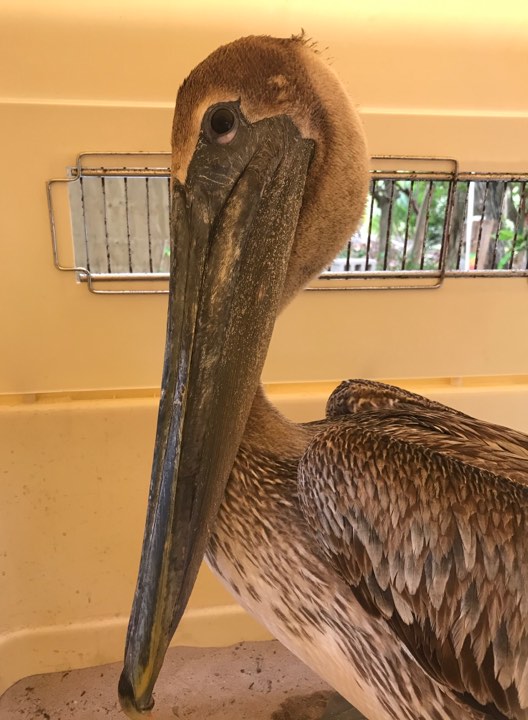
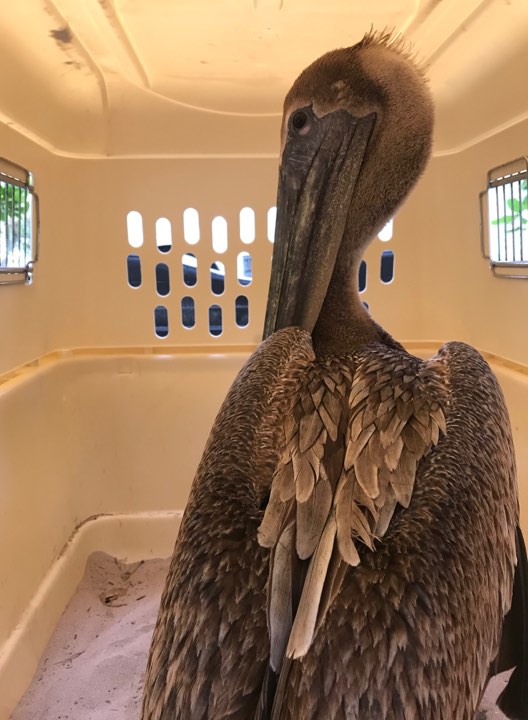
THANK YOU ACES! PLEASE take a look at their website and if you can, make a donation to this crew that works day and night (literally) to rescue all sorts of beautiful creatures and an island that isn’t making it easy on them.
Posted in:
 Some of you know the little diddy: “A wonderful bird is the pelican,
Some of you know the little diddy: “A wonderful bird is the pelican,